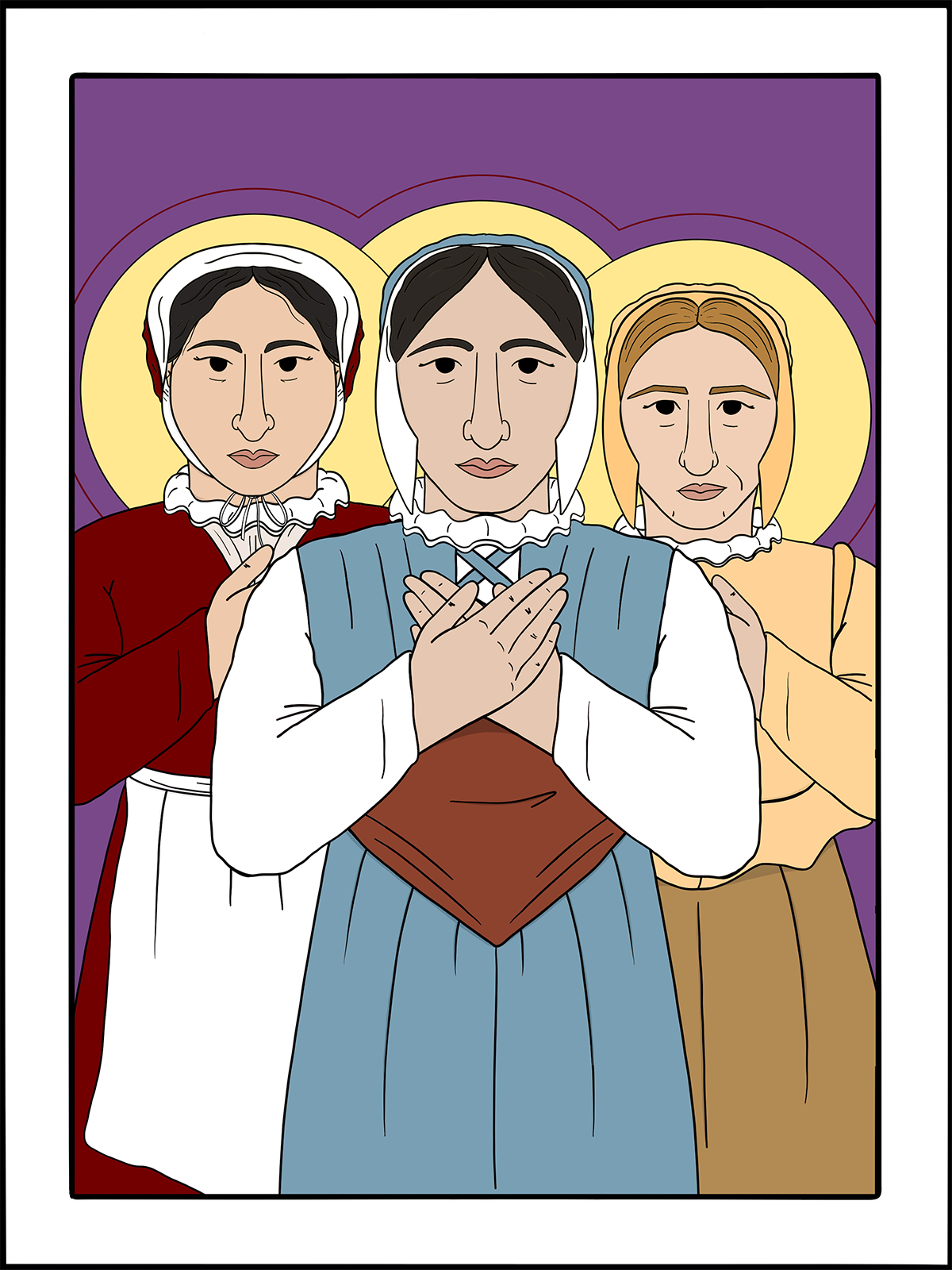
August 30
Margaret Ward, Margaret Clitherow, and Anne Line
Martyrs, 1588, 1586, and 1601
art by Rev. Kirsten Kohr of Geneva, Ohio Most Merciful God, who despises not a broken and contrite heart and has promised to fill those who hunger and thirst after righteousness; We humbly beseech you, remember not the sins and offenses of our ancestors, but grant that, like your servants Margaret Ward, Margaret Clitherow, and Anne Line, we may sanctify you in our hearts and be always ready to answer for our faith with meekness and fear; through our only Mediator and Advocate, Jesus Christ our Lord. Amen.
To their credit, our sixteenth-century ancestors perceived a vital connection between politics, religion, and morality; to their shame, both Catholics and Protestants pursued the righteousness of Christ with the sword. Despite her pacific disposition and refusal to “make windows into men’s souls,” many Roman Catholics were persecuted as traitors by Anglican magistrates during the reign of Elizabeth I. Margaret Ward, Margaret Clitherow, and Anne Line, along with the Forty Martyrs of England and Wales canonized by Paul VI in 1970, fell victims to this Anti-Catholic violence. Though we rightly celebrate the flourishing of Anglicanism in the reign of Elizabeth, we must repent of zeal without knowledge and unjust violence.
Nothing is known of the early life of Margaret Ward, the Pearl of Tyburn. She helped a Roman Catholic priest, William (or Richard) Watson, to escape from Bridewell Prison. Discovered and arrested, Ward was questioned, kept in irons for eight days, hanged by the wrists and scourged; nevertheless, she refused to disclose the whereabouts of Watson. Liberty was offered if she would worship at an Anglican service and beseech pardon of the Queen. Refusing, Ward was executed by hanging on August 30, 1588.
Margaret Clitherow, called the Pearl of York, converted to the Roman Catholic faith. Her husband, whose brother was a Roman Catholic priest, remained in the Church of England. He paid the fines levied for his wife’s lack of attendance at church and allowed her to harbor priests in their home, an offense punishable by death. Discovered and arrested, Clitherow refused to plea, sparing her children from testifying against their mother. To induce a plea, weights were placed on a board until she was crushed. Clitherow died on Good Friday 1586, which coincided with the Annunciation that year. Hearing of her cruel death, Elizabeth wrote to the people of York to protest the execution of a woman.
Anne Line and her brother were converts to the Roman faith disinherited by their Puritan father. Born Alice Higham, she took the name Anne after her conversion, and was married to Roger Line, who was also a disinherited convert. After her husband’s death, Anne was entrusted to keep a house of refuge for fugitive priests by the Jesuit missionary-priest John Gerard. On Candlemas 1601, during the blessing of the candles, her house was raided. At her trial, Line told the court she only regretted not being able to harbor a thousand more priests. She was executed by hanging on February 27.
Excerpted directly from “Lesser Feasts and Fasts 2022,” p. 380-381.

